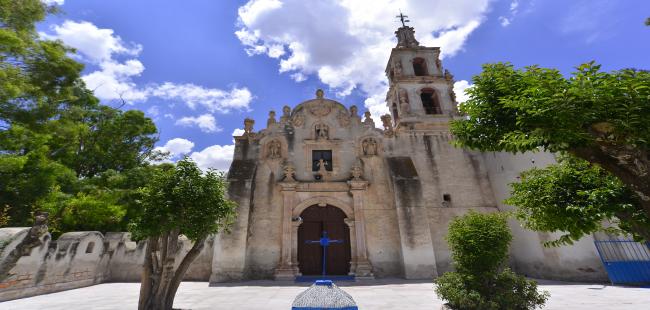Capilla de San Nicolás Tolentino de la antigua hacienda de San Nicolás de Quijas
Route element
Capilla de San Nicolás Tolentino de la antigua hacienda de San Nicolás de Quijas
Hacienda de San Nicolás de Quijas is located in the state of Zacatecas, in the municipality of Pinos, in the town of Nigromante. The earliest records of it date back to 1651, with Captain José de Quijas Escalante y Saldaña listed as its owner.
Its main activity was cattle ranching, and like most haciendas in Zacatecas, Hacienda de San Nicolás de Quijas during the 17th century was closely linked to the political power of wealthy miners and merchants who traveled along the Camino Real, both because of its production and its strategic location.
The chapel of this hacienda was built between 1793 and 1796 and is dedicated to the Augustinian saint, Nicholas of Tolentino. Next to the temple facade stands a tower, likely erected in the mid-19th century, a time when the region was besieged by the Comanches. The interior of the church consists of a single nave covered by a barrel vault with transverse arches for added support, and a drum dome sits above the crossing. Noteworthy are the local paintings in the sacristy and side chapel, dedicated to the hacienda owners.
The hacienda features an entrance composed of an arch where the image of San Nicolás Tolentino, the patron saint of the hacienda, appears in the center. Some of the windows of the house have triangular pediments above the lintels, which dates them closer to the 19th century.



